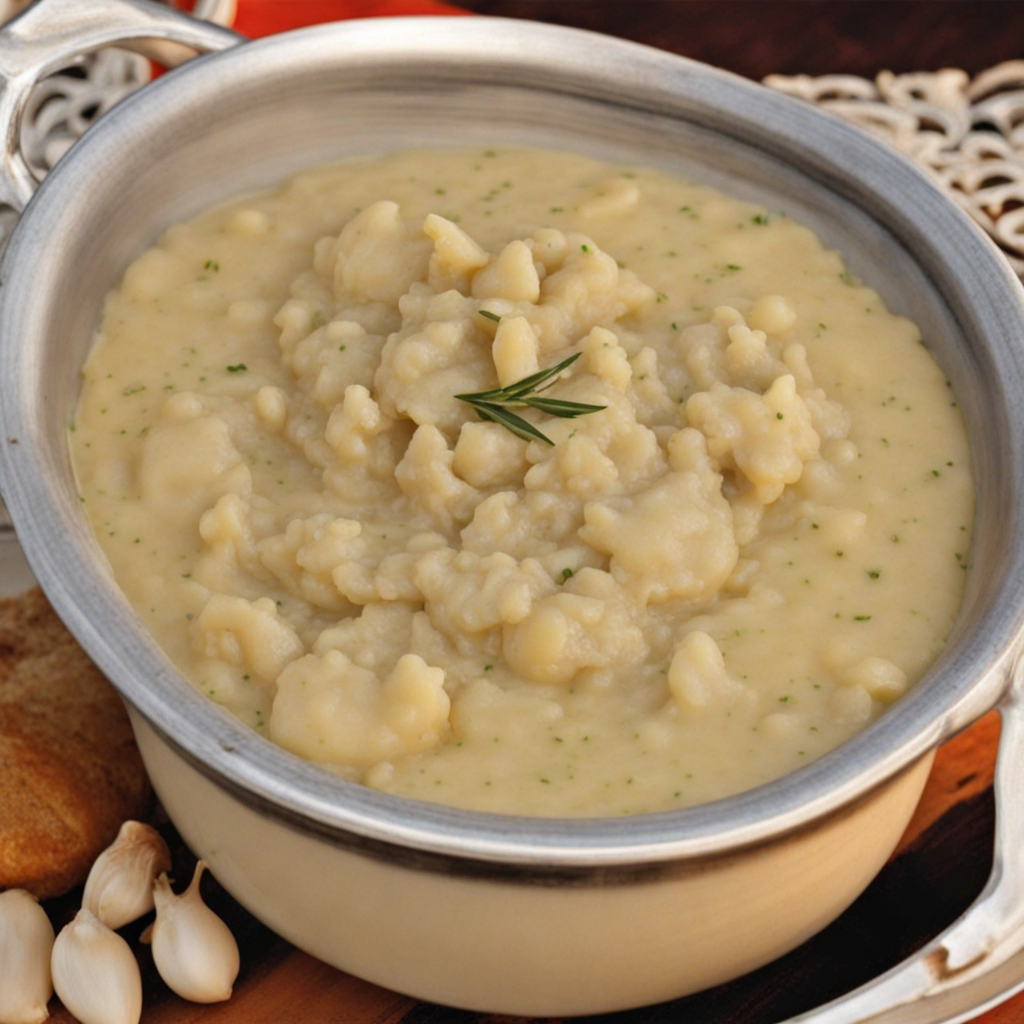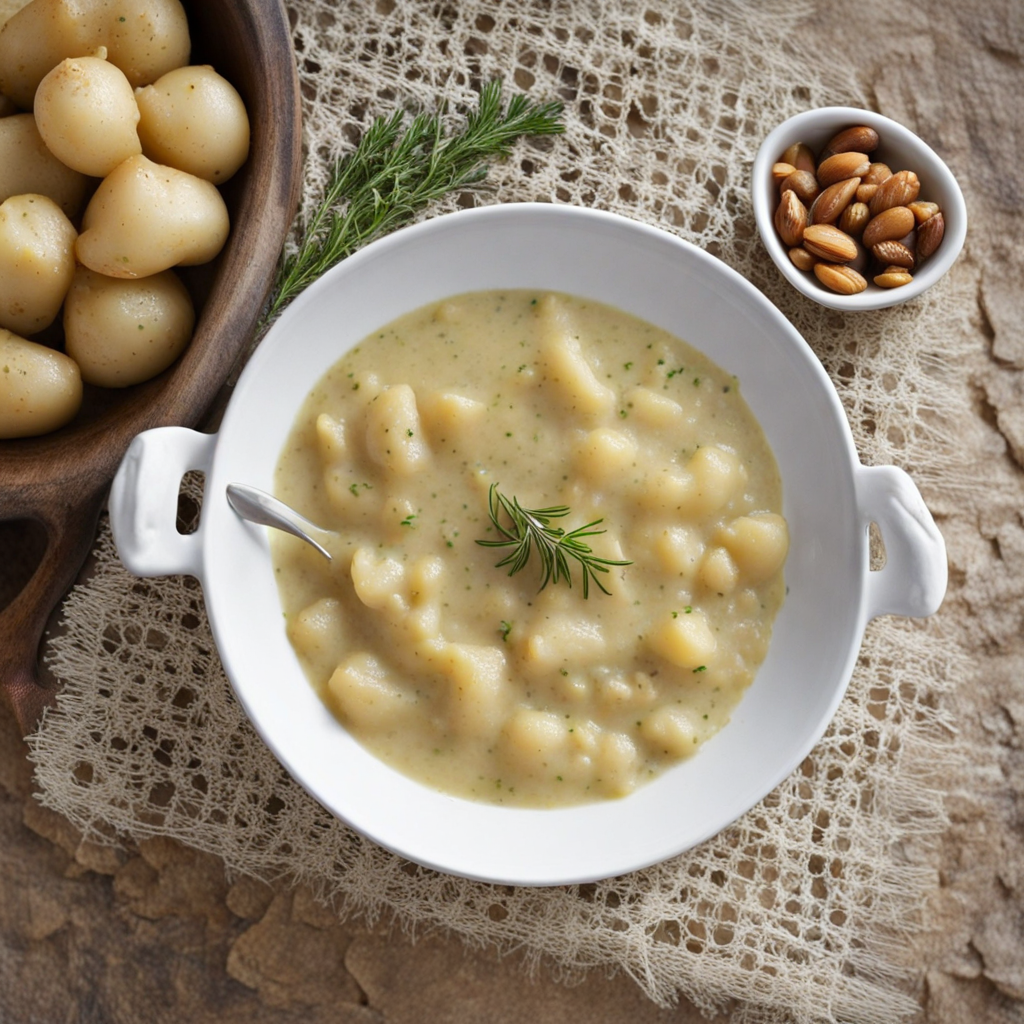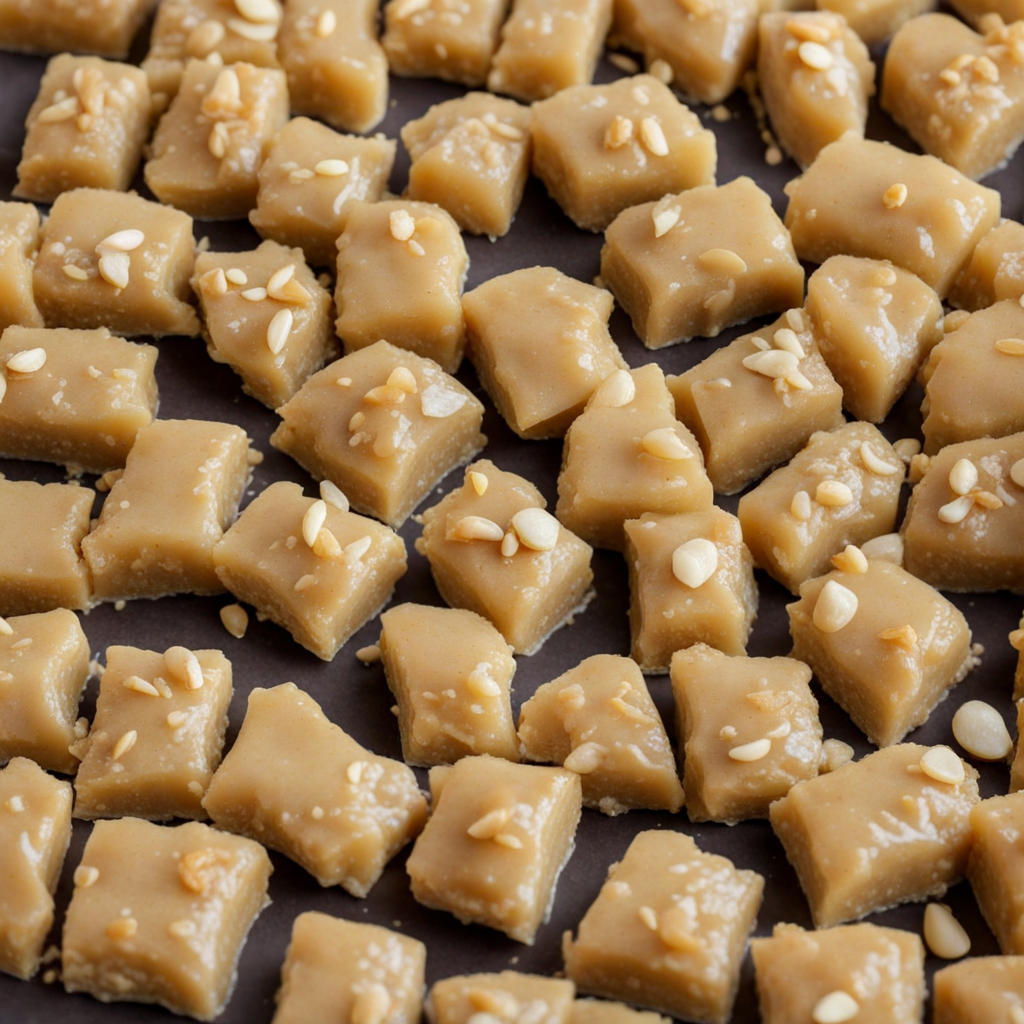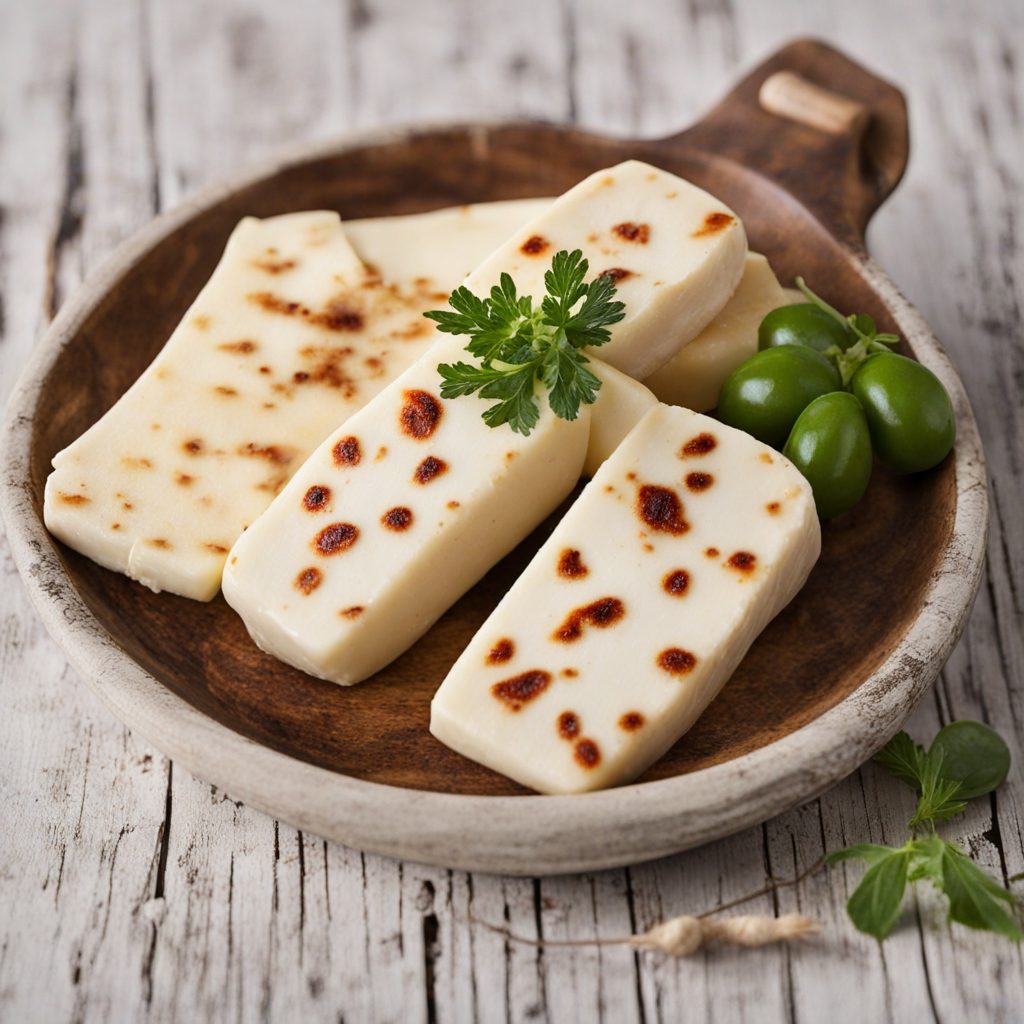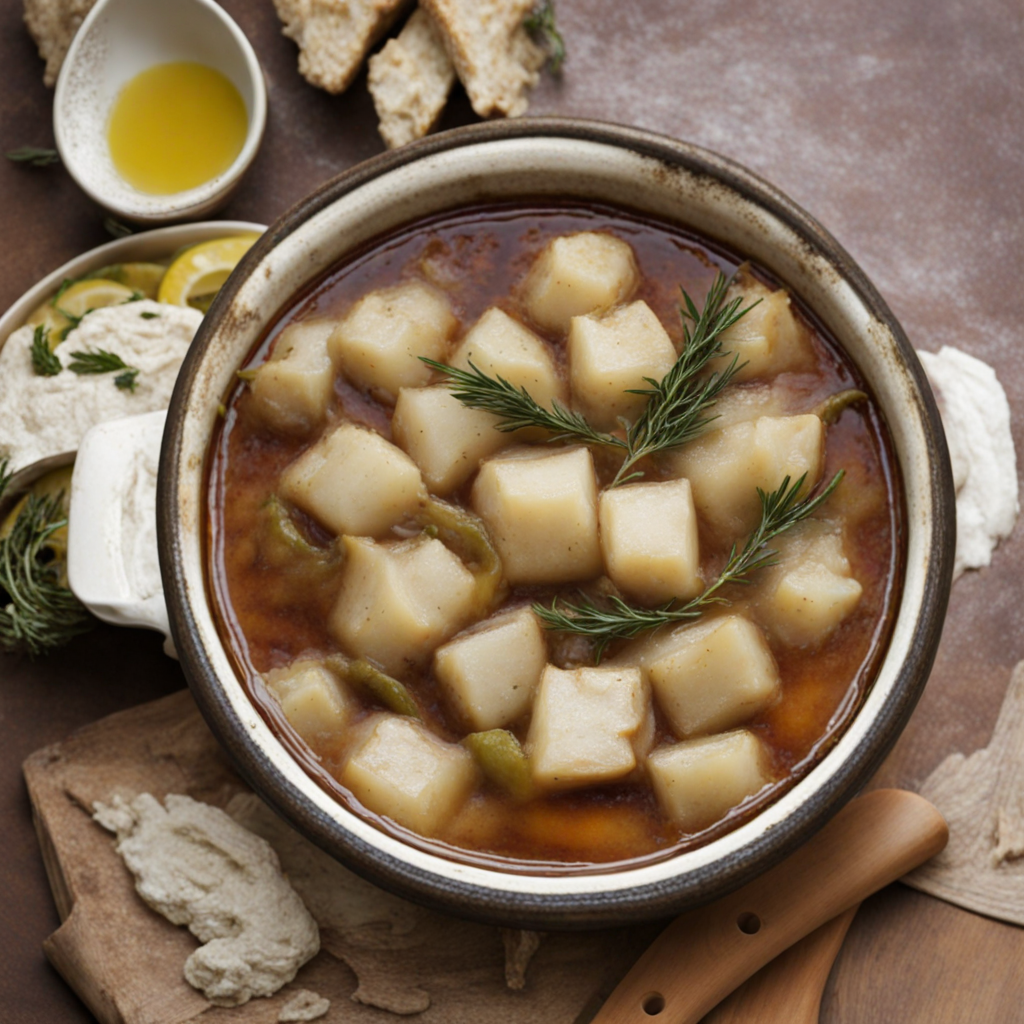Skordalia
Skordalia is a traditional Cypriot dish that beautifully marries the flavors of garlic and potatoes, creating a creamy and robust dip or side dish. The base is typically made by boiling potatoes until tender and then mashing them to achieve a smooth consistency. The key ingredient, garlic, is incorporated in generous amounts, offering a pungent yet delightful punch that elevates the dish to new heights. The combination is then enriched with olive oil, which not only adds richness but also lends a distinctly Mediterranean flair, making each bite a celebration of Cypriot culinary heritage. What sets Skordalia apart from other garlic-based spreads is its versatility. While the classic version features potatoes, variations may include the use of nuts, especially almonds or walnuts, which introduce a unique texture and flavor profile. Some recipes even incorporate bread soaked in vinegar, contributing a tangy note that beautifully balances the garlic's intensity. This adaptability allows Skordalia to complement a variety of dishes, from grilled meats and fried fish to fresh vegetables and hearty bread, making it a staple at gatherings and festive occasions in Cyprus. Beyond its incredible taste, Skordalia is a dish that embodies the spirit of sharing and communal dining. It is often served as part of a mezze platter, encouraging diners to explore a medley of flavors and textures. Whether enjoyed as a dip or a spread, Skordalia invites you to savor each bite, reveling in the boldness of garlic and the comforting creaminess of potatoes. For anyone looking to discover the essence of Cypriot cuisine, Skordalia is an essential experience that promises to awaken the palate and leave a lasting impression.
How It Became This Dish
The Culinary Legacy of Σκορδαλιά: A Journey Through Cypriot History #### Origins Σκορδαλιά, pronounced as "skordalia," is a beloved traditional dish from Cyprus, deeply rooted in the island's rich history and diverse culinary heritage. The name itself derives from the Greek word "σκόρδο" (skordo), meaning garlic, which is the star ingredient of this creamy, garlicky dip. While the exact origins of skordalia are difficult to pinpoint, it is widely believed to date back to ancient times, with references found in various Mediterranean cuisines, including those of Greece and Turkey. The basic components of skordalia typically include garlic, olive oil, vinegar, and a thickening agent, which can range from bread to mashed potatoes or ground nuts. The use of garlic in Mediterranean cooking has been documented for centuries, as it was praised not only for its flavor but also for its medicinal properties. Ancient Greeks considered garlic to be a source of strength, often consuming it before athletic competitions, and it was also used in traditional medicine to treat various ailments. #### Cultural Significance In Cyprus, skordalia transcends mere sustenance; it embodies a sense of community and celebration. It is commonly served during communal gatherings, festive occasions, and religious celebrations, particularly during Lent and Easter. Its versatility allows it to accompany a wide range of dishes, from fried fish and grilled meats to fresh vegetables and bread, making it a staple on Cypriot tables. The dish is also symbolic of the island's agricultural bounty, highlighting the importance of locally sourced ingredients. Cyprus, with its sun-kissed Mediterranean climate, produces high-quality garlic and olives, both of which are integral to skordalia. This connection to the land reinforces the Cypriot tradition of valuing fresh, seasonal produce, a principle that continues to influence the island's culinary practices today. #### Development Over Time As Cypriot culture evolved through various historical influences, so did the preparation and presentation of skordalia. The island's strategic location made it a crossroads for different civilizations, including the Romans, Byzantines, Ottomans, and British, each leaving their mark on the local cuisine. During the Ottoman period (1571-1878), the integration of spices and techniques from Turkish cuisine influenced skordalia's preparation, emphasizing the use of nuts such as almonds or walnuts as thickening agents. This adaptation showcased the dish's versatility and allowed it to be customized according to regional preferences. In rural areas, skordalia was often made with stale bread, a practice that not only minimized waste but also highlighted the resourcefulness of Cypriot households. The British colonial rule in Cyprus from the late 19th to the mid-20th century brought about further changes in culinary practices. The introduction of new ingredients and cooking methods enriched the local cuisine. However, traditional dishes like skordalia remained steadfast, serving as a reminder of the island’s historical roots and cultural identity. In contemporary times, skordalia has experienced a renaissance, with chefs experimenting with modern interpretations while paying homage to traditional techniques. The dish has gained popularity beyond Cyprus, often featured in restaurants that celebrate Mediterranean cuisine. Food festivals and culinary events have also showcased skordalia, introducing it to new audiences and ensuring its place in modern gastronomy. #### Skordalia in the Modern Context Today, skordalia is not only a cherished part of Cypriot cuisine but also a symbol of the island's resilience and adaptability. As globalization and modern culinary trends continue to shape the food landscape, skordalia has found its way into fusion dishes, combining traditional flavors with contemporary presentations. Chefs are now exploring innovative variations, incorporating ingredients like roasted red peppers, herbs, or even avocado to create unique dips that appeal to a broader audience. Moreover, the rise of the health-conscious consumer has led to a renewed interest in traditional foods like skordalia, which are often made with wholesome, natural ingredients. The emphasis on garlic, known for its numerous health benefits, has positioned skordalia as a nutritious choice for those seeking flavorful yet healthy options. The dish's potential for vegan and gluten-free adaptations also aligns with modern dietary preferences, further enhancing its appeal. #### Conclusion The story of skordalia is a rich tapestry woven from the threads of history, culture, and culinary evolution. From its ancient origins to its contemporary iterations, skordalia remains a testament to the enduring legacy of Cypriot cuisine. It is a dish that not only satisfies the palate but also nourishes the soul, evoking memories of shared meals, family gatherings, and cultural celebrations. As we savor this garlic-infused delight, we are reminded of the island's storied past and the resilient spirit of its people. Skordalia is more than just a dip; it is a celebration of Cyprus itself—a culinary tradition that has stood the test of time, continually adapting while remaining firmly rooted in the values of community, sustainability, and a deep appreciation for the land. In every bite of skordalia, we taste the essence of Cyprus, a flavor that is both timeless and ever-evolving, inviting us to explore the rich heritage of this Mediterranean gem.
You may like
Discover local flavors from Cyprus


